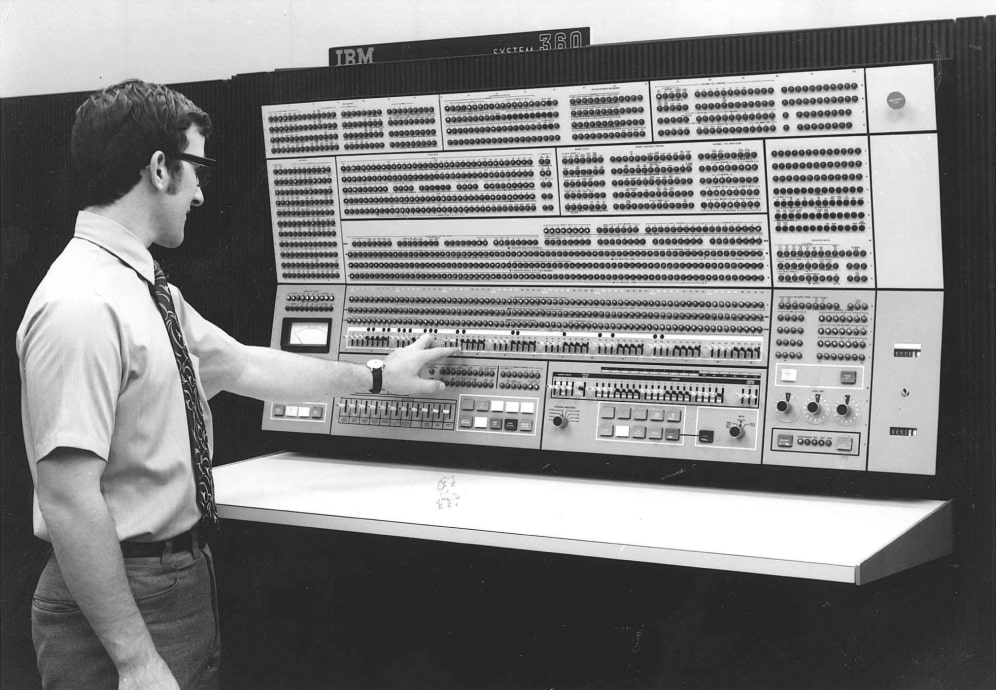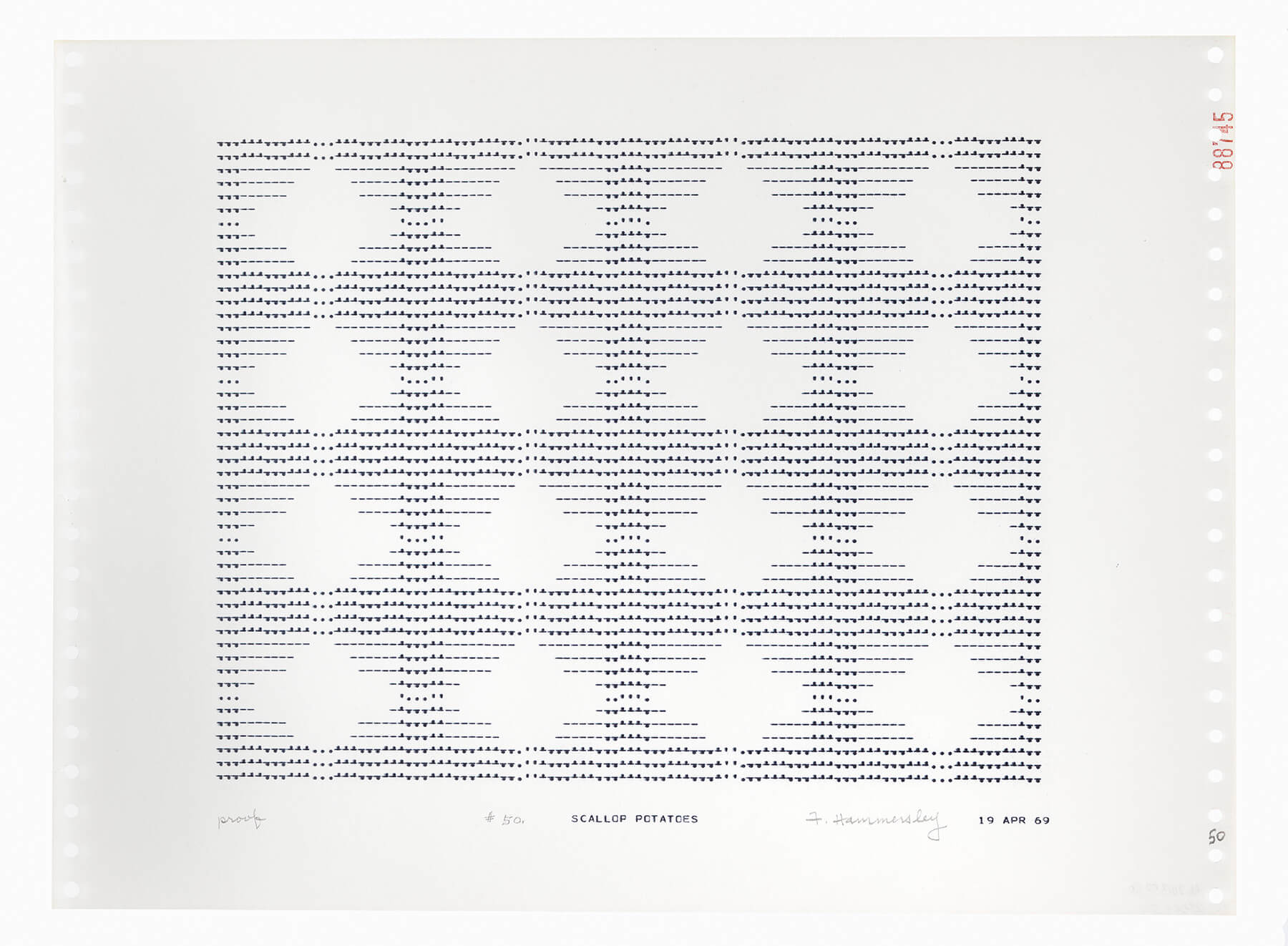An Ethereum Runtime Art Program and Solidity re-interpretation of ART1; a computer art program developed by Richard Williams in 1968 for the IBM 360 mainframe computer.
ART1: The Original Art Program.
In the late 1960s, Richard Williams, an electrical engineer at The University of New Mexico, developed ART1; a computer art program for the IBM 360. Written in the FORTRAN programming language, ART1 received a series of instructions from the user in the form of punch cards.
These instructions repeatedly assembled lines, rectangles, triangles and ellipses, made out of ASCII characters, on one of two arrays. The two arrays were then printed over each other using an IBM 1403 line printer, creating the final artwork.
The groundbreaking mainframe computer, originally designed for scientific and military applications, that notably helped NASA send men to the Moon one year later, was suddenly transformed into an artistic canvas for students and professors alike.
Art faculty member Frederick Hammersley in particular embraced the potential of ART1, systematically exploring the interplay between computing and creativity, resulting in a stunning series of novel computer artworks.

An IBM 360/75 mainframe computer. © University of Waterloo.
ART0x1: The Runtime Art Program.
Building on the legacy of ART1, ART0x1 is a Solidity re-interpretation of the original art program, that similarly welcomes artistic experimentation in a new medium.
ART0x1 consists of a set of Smart Contracts on the Ethereum Virtual Machine (EVM). These contracts execute user defined instructions, efficiently stored as bytes onchain in relation to individual ERC721 tokens, to compute artworks at EVM "runtime" every time tokens are visualised in a web browser.
Through this mechanism, ART0x1 powers a collection of 1024 tokens. During the reveal process, each token will be randomly assigned one of 8 "Genesis" instructions, and one of 4 colour schemes before computing the corresponding artworks in "Gallery" mode.
Once revealed, "Original" mode is enabled allowing collectors to create their own artworks through a custom user interface or by inputting instruction strings directly to the smart contracts. When a token has its original instructions cleared, the program falls back to computing its assigned artwork in “Gallery" mode.
Alongside this new mode, ART0x1 also draws on permissionless multiplayer and economic affordances of the blockchain canvas to further encourage and compound artistic explorations.

Computer Drawing #50 by Frederick Hammersley, 1969. © New Mexico Museum of Art and LACMA.
GFX Modules: Extending Runtimes.
GFX Module: Hypercastle Zones, Alto + A Block Change by hashrunner.
Artworks can be further modified, extended and animated in the browser, via separate smart contracts called GFX Modules. These interact with the core ART0x1 program at runtime through a simple interface, capable of overriding preset attributes of the artwork as well as injecting JavaScript code into the assembled piece.
Adding a second layer of artistic experimentation, GFX Modules can permissionlessly compose onchain data from other art collections or protocols on the Ethereum World Computer, as well as leverage a growing set of JavaScript libraries stored onchain.
Anyone with an Ethereum address may deploy GFX Modules and register them on ART0x1 for collectors to run on their token(s). An optional price, for running a GFX Module on a token for the first time, may also be set by the creator to be automatically forwarded to them as part of the same transaction.
In deep appreciation for Mathcastle Studio's ongoing contributions to ways of seeing the World Computer Art Medium, ART0x1 comes with a pre-listed GFX Module, called "Hypercastle Zones". This allows Terraforms collectors to compose their parcel's onchain zone palette with their ART0x1 token's artwork into an animated, interactive piece.